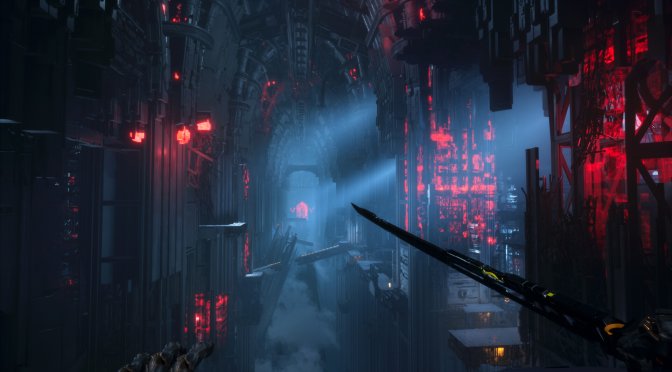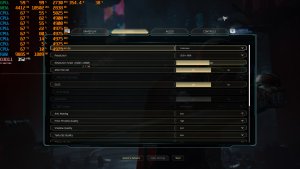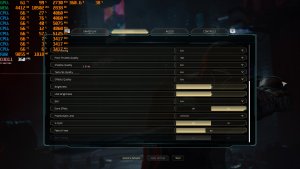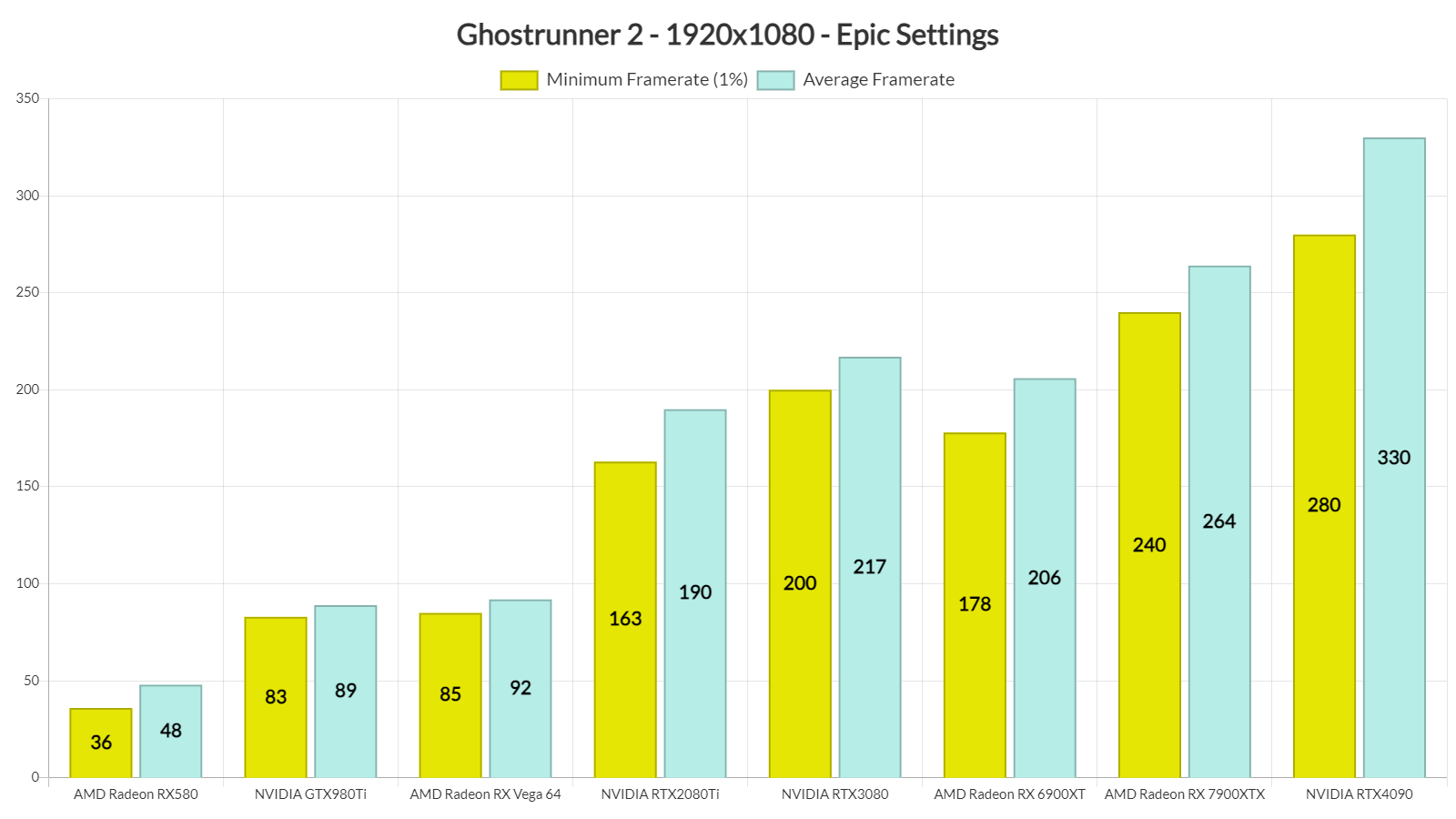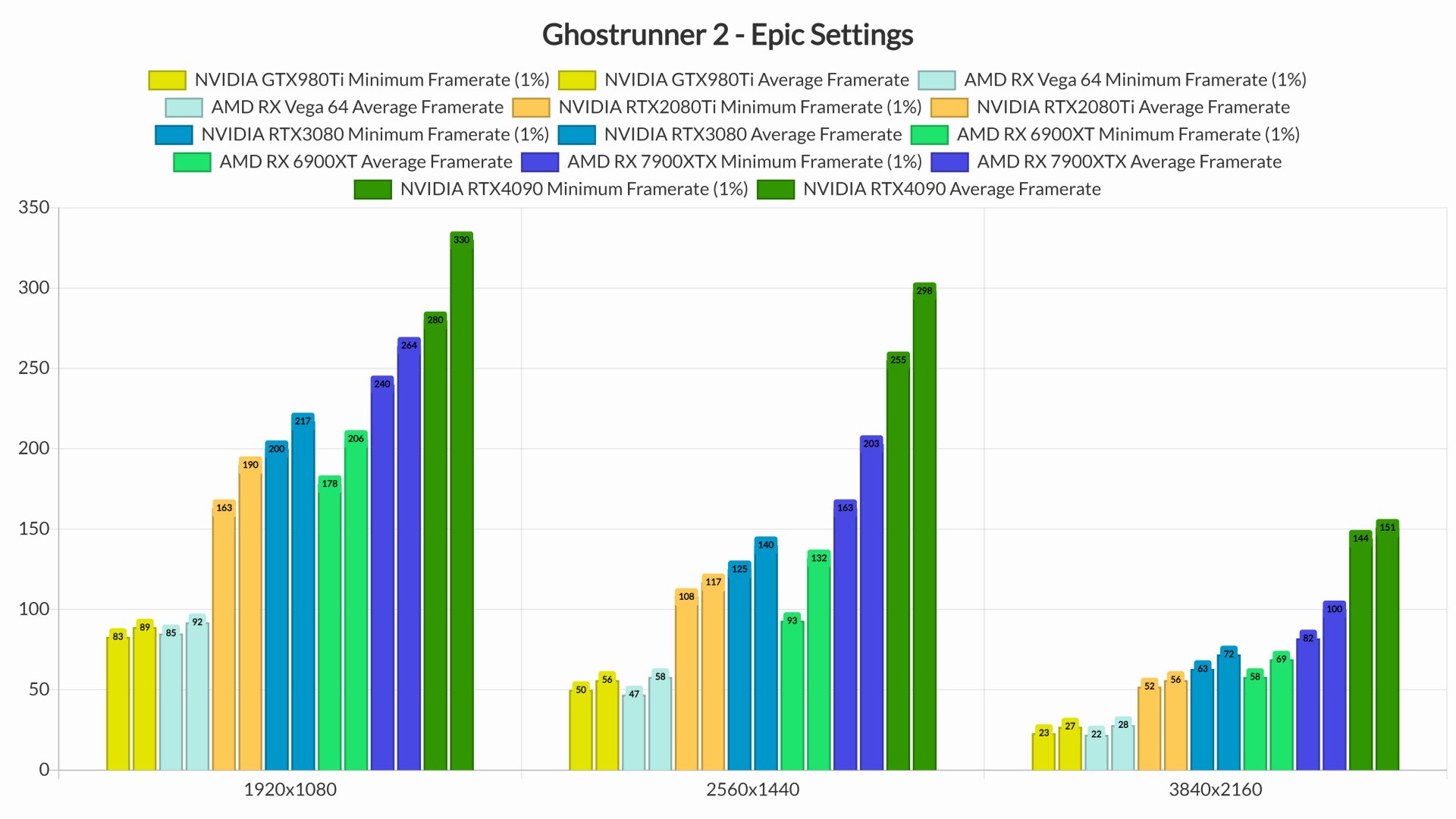505 Games has just lifted the review embargo for Ghostrunner 2. Powered by Unreal Engine 4, it’s time now to benchmark it and examine its performance on the PC platform.
For our Ghostrunner 2 benchmarks and PC Performance Analysis, we used an AMD Ryzen 9 7950X3D, 32GB of DDR5 at 6000Mhz, AMD’s Radeon RX580, RX Vega 64, RX 6900XT, RX 7900XTX, NVIDIA’s GTX980Ti, RTX 2080Ti, RTX 3080 and RTX 4090. We also used Windows 10 64-bit, as well as the GeForce 545.84 and AMD Adrenalin Edition 23.10.2 drivers.
One More Level has added a few graphics settings to tweak. PC gamers can adjust the quality of Textures, Anti-Aliasing, Effects and more. The game also supports all available PC upscalers (AMD FSR, NVIDIA DLSS and Intel XeSS). There’s also a FOV slider. Not only that but One More Level will add some Ray Tracing effects via a day-1 patch.
Ghostrunner 2 does not feature any built-in benchmark tool. So, for our tests, we used the game’s opening gameplay area. We did not use its cut-scenes. The cut-scenes appear to be more demanding, and they do not represent how the game actually performs during gameplay sequences.
Ghostrunner 2 is a GPU-bound title. At 1080p/Epic Settings, our NVIDIA GeForce RTX4090 was able to push a minimum of 280fps. As such, there was no point at all in benchmarking different CPU configurations. Rest assured that the game will run with high framerates on a variety of CPUs.
At 1080p/Epic Settings, most of our graphics cards were able to provide framerates higher than 60fps. Currently, the game only supports the DX11 API and as such, it performs better on NVIDIA’s hardware. For instance, the GTX980Ti can match the performance of Vega 64, and the RTX3080 can beat the RX 6900XT.
At 1440p/Epic Settings, our top five GPUs had no trouble at all running the game. As for Native 4K/Epic Settings, the RTX3080, RTX4090 and RX 7900XTX were able to push framerates higher than 60fps. The AMD Radeon RX 6900XT was also able to provide a smooth gaming experience, provided you have a FreeSync monitor.
Graphics-wise, Ghostrunner 2 looks great but it does not really push the graphical boundaries of PC first-person shooters. For the most part, the game has high-quality textures and there are some amazing decapitation/dismemberment effects. However, we did spot some weird 30fps animations in distant enemies. Its lighting system also feels dated, especially when compared to UE5’s Lumen or other games using ray-traced lighting. Thankfully, though, the game has an amazing art style. In short, while Ghostrunner 2 is pleasing to the eye, it doesn’t offer anything you haven’t seen in other games. Let’s at least hope that the Ray Tracing effects that One More Level will implement will be RTAO and RTGI, and not ray-traced reflections.
Before closing, I should mention the game’s awful shader compilation stutters. While there is a shader compilation screen at launch, the game suffers from major shader compilation stutters. You can see most of them in the following video. Oh, and for those who were blaming DX12, this is another DX11 game that has shader compilation stutters. Let’s hope that One More Level will also address these stutters via its upcoming day-1 update.
All in all, Ghostrunner 2 will run smoothly on a wide range of PC configurations. And while it will not “wow” you with its graphics, it has an appealing art style. My only gripe with it is its awful shader compilation stutters. If One More Level manages to resolve them and overhaul its lighting via Ray Tracing, then we’ll have in our hands a pretty solid UE4 game.
Enjoy!

John is the founder and Editor in Chief at DSOGaming. He is a PC gaming fan and highly supports the modding and indie communities. Before creating DSOGaming, John worked on numerous gaming websites. While he is a die-hard PC gamer, his gaming roots can be found on consoles. John loved – and still does – the 16-bit consoles, and considers SNES to be one of the best consoles. Still, the PC platform won him over consoles. That was mainly due to 3DFX and its iconic dedicated 3D accelerator graphics card, Voodoo 2. John has also written a higher degree thesis on the “The Evolution of PC graphics cards.”
Contact: Email

